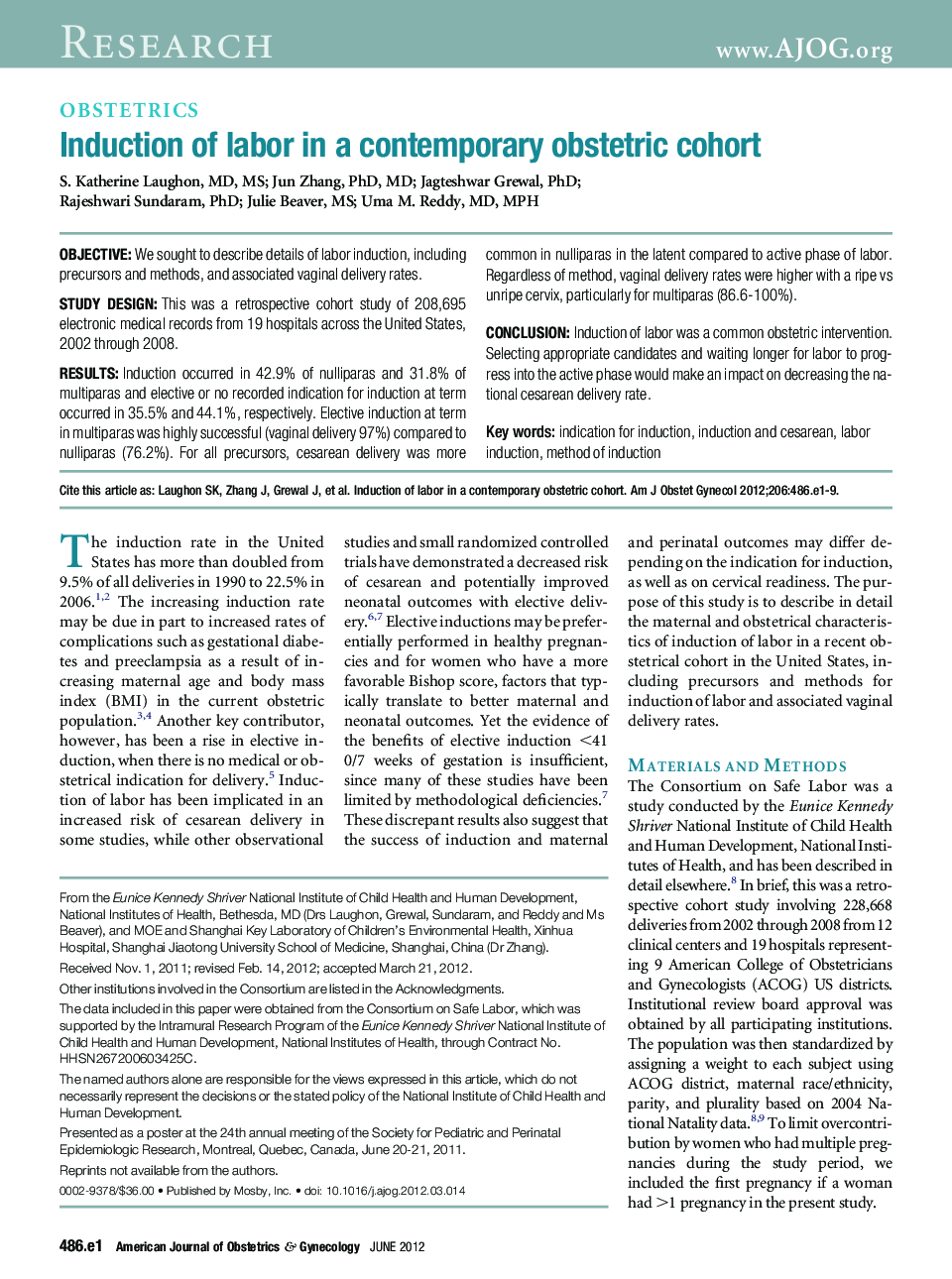| Article ID | Journal | Published Year | Pages | File Type |
|---|---|---|---|---|
| 6147074 | American Journal of Obstetrics and Gynecology | 2012 | 9 Pages |
ObjectiveWe sought to describe details of labor induction, including precursors and methods, and associated vaginal delivery rates.Study DesignThis was a retrospective cohort study of 208,695 electronic medical records from 19 hospitals across the United States, 2002 through 2008.ResultsInduction occurred in 42.9% of nulliparas and 31.8% of multiparas and elective or no recorded indication for induction at term occurred in 35.5% and 44.1%, respectively. Elective induction at term in multiparas was highly successful (vaginal delivery 97%) compared to nulliparas (76.2%). For all precursors, cesarean delivery was more common in nulliparas in the latent compared to active phase of labor. Regardless of method, vaginal delivery rates were higher with a ripe vs unripe cervix, particularly for multiparas (86.6-100%).ConclusionInduction of labor was a common obstetric intervention. Selecting appropriate candidates and waiting longer for labor to progress into the active phase would make an impact on decreasing the national cesarean delivery rate.
